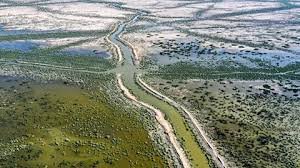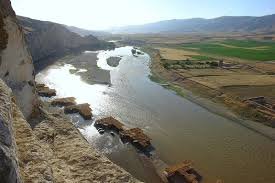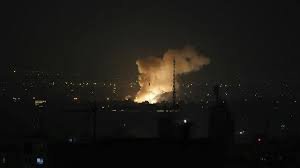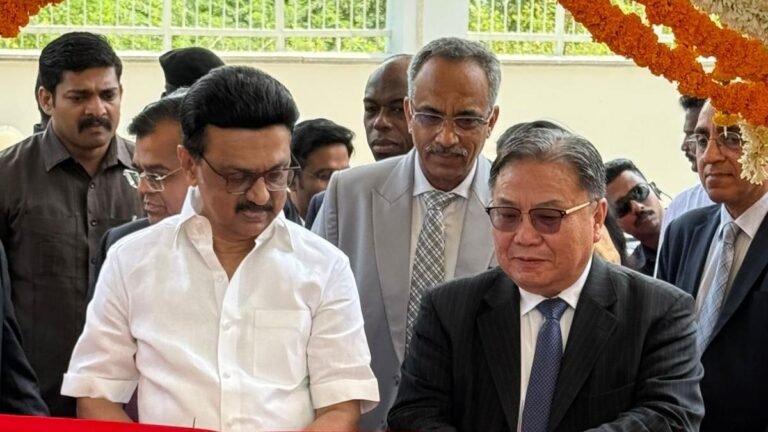
The New Frontline of Resource Conflict
As climate change advances water scarcity in arid areas, a lesser-known but growing fight is taking place below the sand in the Middle East. In contrast to the contests over oil or land, this fight is over shared underground water reserves – specifically shared aquifers that cross political boundariesCountries with the example of Jordan, Saudi Arabia, Israel, Palestine, and Syria increasingly depend on fossil aquifers that developed over thousands of years, and therefore cause increased tension over control, access, and rights of use.

They are all fossil aquifers..
The Aquifers Underneath the Crisis.
The Middle East is one of the driest places in the world, with countries receiving less than 200mm of rain per year.. According to the World Resources Institute, 12 of the 17 most water-stressed countries are in the Middle East and North Africa. Four significant aquifers represent a lifeline across this region:
- Disi–Mudawarra to Amman Aquifer (Jordan-Saudi Arabia)
- Mountain Aquifer and Coastal Aquifer (Israel-Palestine)
- Western Aquifer Basin (Israel, Palestine)
- Wadi Sirhan Basin (Saudi Arabia, Jordan)
These aquifers are transboundary, spanning more than one national jurisdiction, often with limited bilateral or multilateral agreements about sustainable extraction and management.
A Ticking Time Bomb
The shared Disi aquifer has pressure being placed upon it, for example. In 2013, Jordan connected a pipeline from the Disi aquifer in order to provide recent water supplies to Amman, and took out approximately 100 million cubic meters a year from it in draws. Yet, Saudi Arabia has its extraction from the same shared aquifer, and mainly for agricultural purposes. Unlike Jordan, which would be mainly dedicated to domestic use of the water, Saudi Arabia has provided subsidies for large-scale wheat farming in the desert, which seems both inappropriate and unsustainable, and brings criticism from water experts around the world.
In similar ways, in Israel-Palestine, access to the Mountain Aquifer has also become an extremely politicized matter of consequence. For example, B’Tselem, an Israeli human rights organization, reports that Israel controls approximately 80% of the stolen water from this aquifer, which meaningfully limits access for Palestinians and leads to significant water scarcity in the Palestinian territories, where many households receive a delivery of water only once a week.
Expert Opinions and Analysis
According to Dr Ziad Al-Khoury, hydraulic geologist at the American University of Beirut, “The central problem is the lack of formally binding international agreements on groundwater resources in this region. Most countries do not even disclose their actions and undertake them with no form of transparency”.
The UN Convention on the Law of the Non-Navigational Uses of International Watercourses (1997) has laid the groundwork for the cooperation of surface water, but does not cover groundwater aquifers that are not tied to surface flows. Therefore, states are free to pursue national interests without regard for shared sustainability, resulting in a legal-diplomatic void.
Questioning Assumptions and Claims
Governments will often claim that they are ‘sustainably’ extracting groundwater, but there is rarely independent verification of these claims. For example, Saudi Arabia’s declared reduction in wheat farming in the mid-2010s was characterized as a success in conservation, but NASA’s GRACE satellite would indicate continued extraction from deep aquifers occurs with abandon. The opaque nature of data sharing among Middle Eastern nations prevents accurate tracking and cooperation.
Likewise, while Israel markets its state-of-the-art desalination technology, it nevertheless continues to depend on West Bank aquifers, raising ethical and political concerns surrounding resource utilization in occupied regions.
Implications and Consequences
The implications of this invisible water war are numerous:
- Agricultural decline in Jordan and Palestine, due to limited irrigation water.
- Mass migration occurs as rural citizens walk away from land that is no longer suitable for agriculture.
- Increased diplomatic tension, especially between Jordan and Saudi Arabia.
- Environmental degradation, especially from over-exploitation that causes land subsidence and salinization.
Gaza is in a precarious state: 90% of the groundwater is contaminated, and its citizens are dependent on truck water or aid, both of which result in vulnerabilities and the potential for unease.
Examples from other regions
As in other water-scarce locations, there are valuable lessons to be learned from caution. For example, the Ogallala Aquifer in the United States—one of the largest freshwater aquifers in the world—is depleting rapidly due to unregulated agricultural pumping. The U.S. faces internal disputes among states, such as Kansas, Texas, and Nebraska.
In contrast, southern African nations like Botswana and Namibia have signed joint management protocols for the Stampriet Transboundary Aquifer System, providing a rare model of cooperation. While these frameworks are complicated, they indicate that collaborative groundwater governance is possible when there is political will.
Conclusion: An Urgent Need for Water Diplomacy
With the underground water war in the Middle East looming, regional stability and security are being threatened. Without enforceable, cooperative frameworks for shared aquifer management, countries will certainly exacerbate existing geopolitical tensions and contribute to future conflicts over an invisible but essential resource.
The way forward must be seen:
- Transparent data sharing through joint monitoring systems
- International mediation to establish formal water-sharing agreements
- A shift in policy that includes sustainable extraction, and alternative water sources such as desalination and wastewater reuse
Only when groundwater is perceived primarily as a shared resource, and not a mechanism of power, can the region avoid a catastrophic hydrological crisis.
FOR MORE UPDATES VISIT QUESTIQA.COM




